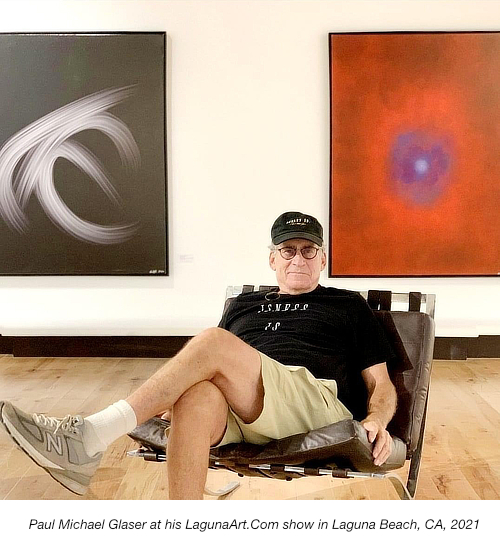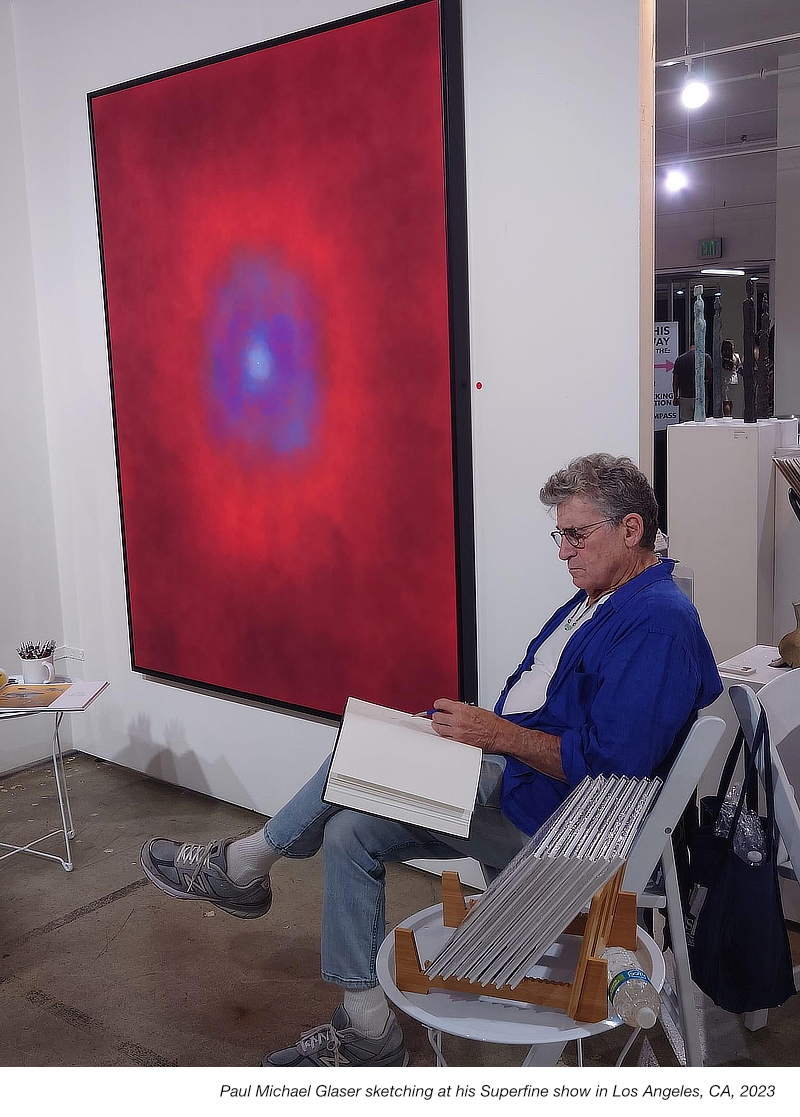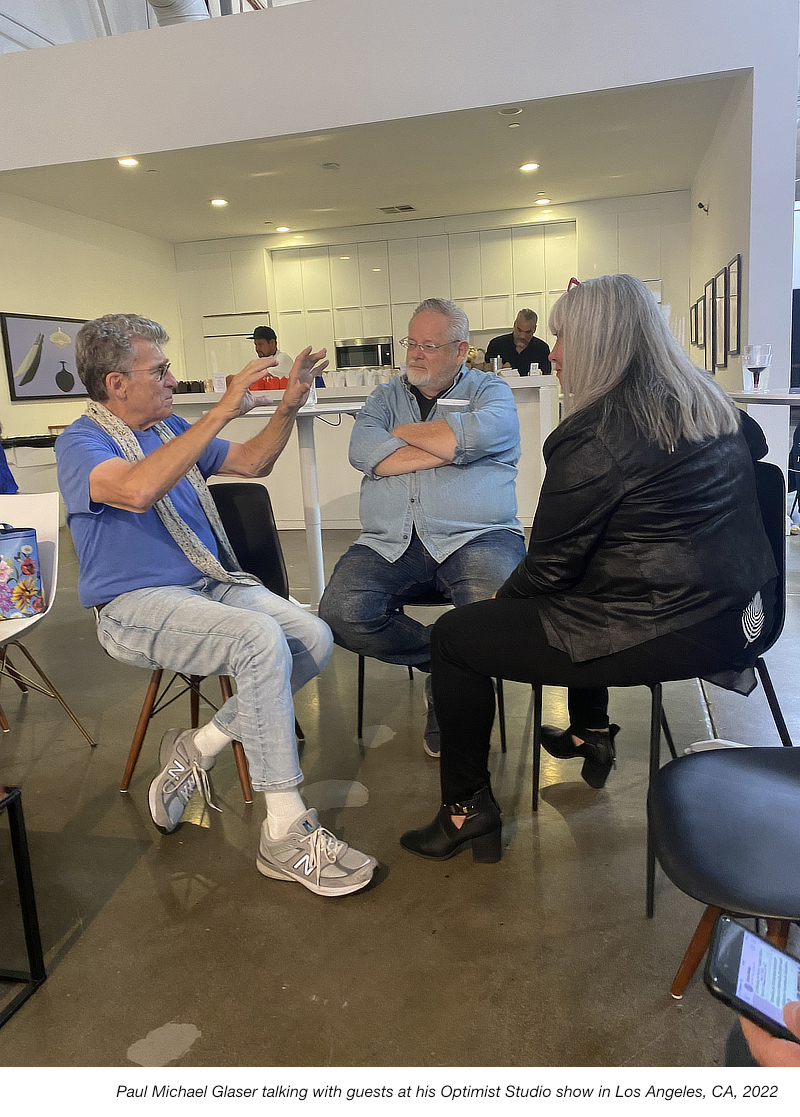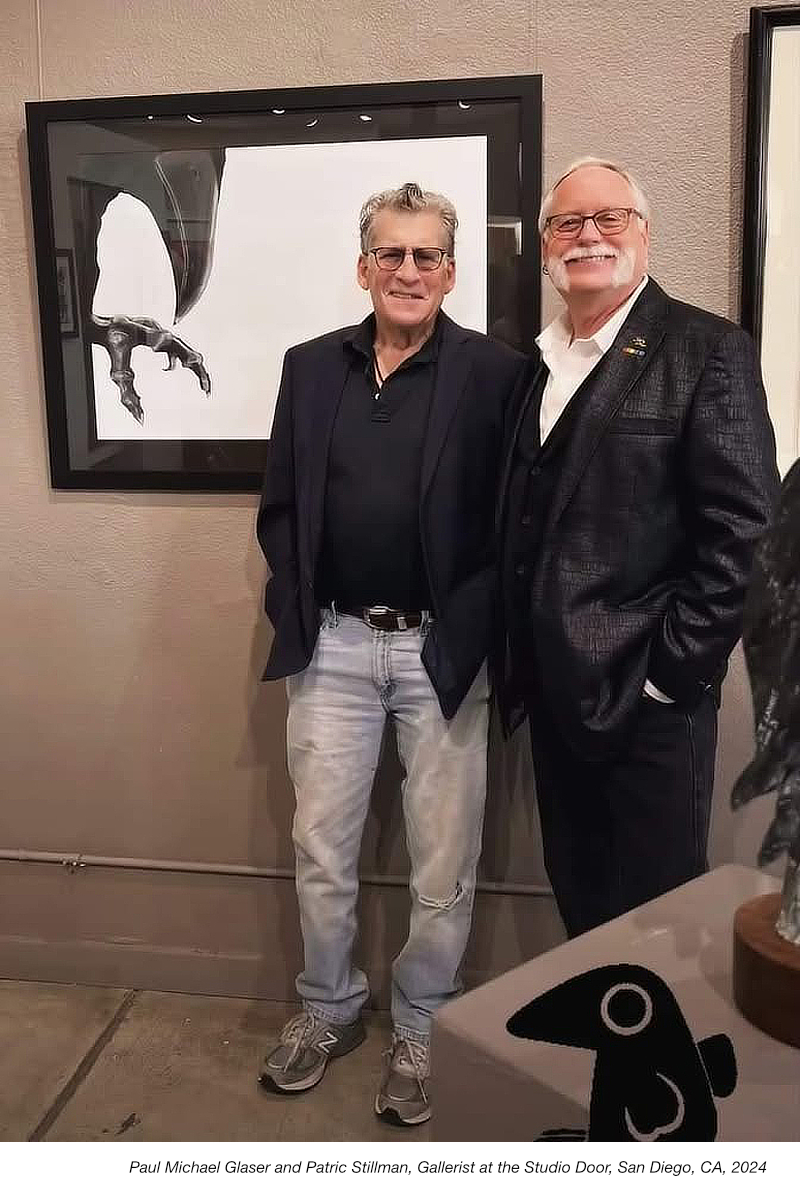
Tell us how your journey into artistic creation began. What has influenced you the most?
I was raised in a house where my dad was an architect and he collected art, and my mother was very much involved in the arts also. So as children we did a lot of sculpting, painting, drawing… you name it.
How would you describe your artistic style?
What inspires you?
What inspires me is the process of discovery when I sit and work.
In addition to your fame as an artist, you are internationally known as a prominent actor and director. How does this affect your artistic endeavors – when does it help and when does it hinder? In what ways do your work in film, poetry, and visual art intersect?
I look back on my life as an artist, or as a person who is artistically inclined and likes to play around in a lot of areas.
I look at the sum of that experience and see myself as a storyteller. When I was a child, my mother read to me constantly. I like stories. I tell a pretty good story. But even the paintings, even the acting, are all storytelling. It’s all, “This is me. This is who I am. Do you see yourself in this? Do you discover the things I discover?” It’s trying to present the human condition as I experience it, hoping that communicates to others.

...It’s trying to present the human condition as I experience it, hoping that communicates to others
You are currently focusing on digital painting. Why digital? What are the advantages and drawbacks of different painting techniques for creating your art?
The way I got back into my drawing and my painting was that I had written two books. The first book was Chrystallia and the Source of Light, and the second book (Hookfoot and Peg, A Cautionary Tale) I haven’t published yet because when I was looking for an illustrator, my daughter said to me (and this goes back eleven years), she said, “You illustrate it.” I thought about that for a moment, and it made sense to at least try. So, I started sketching and then I was traveling, so I had an iPad with me, so it was easiest to put the sketches on the iPad and paint them, and it was digital painting. I mistakenly made the decision that the learning curve with brushes and acrylics and watercolors was going to be steeper than the learning curve of Photoshop, which is the app I use on my iPad and on my Cintiq (Wacom tablet). Therein evolved my digital indulgence, if you will.
One of the drawbacks to digital is that there is not a whole lot of depth. I like motion and I like depth, so it’s a bit of a challenge for me to try to put it up there. The other thing is that digital, even though it’s available on computers and on screens, it’s not an organic piece of art. In other words, it’s not paint, it’s not pencil. I’ve been doing a lot of sketching lately. So, it’s kind of hard to feel a human connection. Maybe that makes it all the more important to be able to identify a story or a question you are trying to ask and answer, which is what my process is usually about.

I reference my careers as an actor and director, and say that each one has to find their own way
Due to the onset of AI, digital painting and illustration are considered the most vulnerable art forms. Are you concerned about the future of human-created digital paintings?
Digital art is just a new canvas, really. It doesn’t have the history or the amount of effort, perhaps, that one would put into an oil painting, albeit I’ve done works that have taken a long, long time. But it doesn’t have a great tradition behind it in a sense of history and it’s also very easy to duplicate or replicate on the one hand. On the other hand, digital has the opportunity to reach a lot more people, and if you can use it successfully, and realize pieces that will impact other lives, then there is a lot to be said for digital. I do think the amount of time one takes to do a particular work encompasses a lot of living. The more time you take, the more living you do, and the more living you do when you look at the canvas, you’re going to see a lot greater variety and ideas.
How do you promote your art? What advice would you give to aspiring artists in terms of finding way to their audience?
I wish I had an answer. I reference my careers as an actor and director, and say that each one has to find their own way.

What is missing from the contemporary art market? What problems do you see in contemporary art right now?
I was raised in a house with all kinds of paintings around me; famous artists and others. The thing that I am most concerned about with contemporary art today is the subject matter. I don’t think it’s enough – sometimes it’s enough – but I don’t think in the overall impact of art, of imagery, that contemporary art today really tells enough stories. It’s not relied on – it sort of is – but people tend to look at images they see on television, or a computer screen, whatever, in terms of information. Interesting, huh? Information - as if life could be all X’s and O’s. It becomes a greater challenge when we are inundated with so much information to sort through it all and find the human experience.
I think the availability of digital and computers and all of that makes it much easier for anybody and their uncle to attempt to create something, should that be their inclination, which is great. But it’s so quick and so fast from an idea to canvas, it’s a seduction. “Oh, look what I did. Look at that!” And you can sit and admire it, and other people can admire it, and that feels good, in terms of more instant gratification, if you will, than living with the process of creating an oil or acrylic painting or a lithograph or anything like that that is time-intensive and allows you, as I said before, to have more life’s experience in the course of creating a piece.
What are your creative plans? What are you currently working on?
My creative plans are to continue to be creative. I’m working on a volume of sketches and always painting. And finishing up my book.
Addition
Paul Michael Glaser: Let me say one last thing about storytelling. Storytelling is the way in which we communicate with each successive generation our life’s experience. It can be the events and things that happen to us, which is more like a reportage. But also the actual experience of life, the trials and tribulations, successes and failures, the effort it takes to live, and the need to find a way to overcome the fear or to use the fear, that are such important things to communicate to each generation and storytelling has always been the way. Computers right now - what the internet has done is taken all this and made it into information that is readily accessible. That doesn’t speak as much to human choice, human need, and human discovery. It’s more like shopping.
